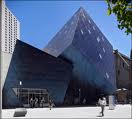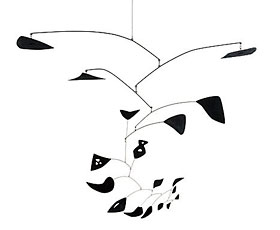
 The upcoming TechnoCRAFT exhibition at the Yerba Buena Center for the Arts explores the blurred line between designers and consumers in a world where consumers are increasingly turning their backs on mass produced products or at least want the illusion that they are able to do so by being given some degree of creative autonomy in the making of a product by a designer and manufacturer.
The upcoming TechnoCRAFT exhibition at the Yerba Buena Center for the Arts explores the blurred line between designers and consumers in a world where consumers are increasingly turning their backs on mass produced products or at least want the illusion that they are able to do so by being given some degree of creative autonomy in the making of a product by a designer and manufacturer.
Judging by the advanced materials I’ve received about the exhibition, the two most interesting objects that will go on display when the show, curated by designer Yves Behar, opens on July 9, are the ones whose images are shown above. Both the Fragile Salt & Pepper Shaker and the Droog Do Hit Chair demand interactivity from the consumer — an act which is simultaneously creative and destructive.
In order to use the chair, which comes in the form of a stainless steel cube, the consumer must first bash it into a comfortable shape by wielding a sledgehammer or other similar tool. Meanwhile, the ceramic salt and pepper shakers, which come fused together, have to be broken apart by the consumer. The break will be different each time, creating a unique shape, just like each finished Do Hit Chair.
I imagine there’s some satisfaction to be gleaned from the end user’s point of view in snapping the thin ceramic necks of the salt and pepper shakers and slamming a metal cube with a mallet to make a chair.
From an interactive perspective, it’s fascinating to see how a 1970s style performance art process (the sort of thing that would have been captured decades ago as a video art piece and put in a contemporary art gallery) is now being replicated by the consumer.
On the other hand, there’s a sort of a shallowness to this “customizable art.” The consumer’s power to create feels too controlled by the designer, who is after all providing full instructions to the end user about what he or she needs to do to make a usable chair or salt and pepper shakers. All that’s required on the consumer’s side is brute force (in the case of the chair) and dextrous fingers (for the shakers). The pieces provide an opportunity for interactivity, but do they promote creativity and artistry or ultimately destroy them?

 Yesterday, as we were standing in the vestibule/store at the
Yesterday, as we were standing in the vestibule/store at the  It’s hard to get the right balance with community music-making. As an oboist, I’ve played in groups which take themselves far too seriously and others which don’t take themselves seriously enough.
It’s hard to get the right balance with community music-making. As an oboist, I’ve played in groups which take themselves far too seriously and others which don’t take themselves seriously enough. Jan Kounen’s mostly insipid, exposition-laden feature film about the relationship between the 20th century’s greatest couturier and composer, Coco Chanel & Igor Stravinsky, is worth seeing for two reasons:
Jan Kounen’s mostly insipid, exposition-laden feature film about the relationship between the 20th century’s greatest couturier and composer, Coco Chanel & Igor Stravinsky, is worth seeing for two reasons: Yesterday, the
Yesterday, the  Is it better for a grant-making organization to dole out funds to arts organizations as a result of a closed-door decision-making process in which a panel of “experts” decides which organizations are most worth supporting or to let the public decide by leveraging the power of a popular social networking tool?
Is it better for a grant-making organization to dole out funds to arts organizations as a result of a closed-door decision-making process in which a panel of “experts” decides which organizations are most worth supporting or to let the public decide by leveraging the power of a popular social networking tool? The
The  After the snoozefest that was Faust, the
After the snoozefest that was Faust, the  The
The  The
The  Yesterday afternoon, I spent a wonderful hour or so at Frankie’s (aka 21 Club). Frankie’s is a dive bar in the Tenderloin neighborhood of San Francisco at the corner of Turk and Taylor Streets. Few tourists venture there. I was at Frankie’s at the invitation of Elvin Padilla, Executive Director of the
Yesterday afternoon, I spent a wonderful hour or so at Frankie’s (aka 21 Club). Frankie’s is a dive bar in the Tenderloin neighborhood of San Francisco at the corner of Turk and Taylor Streets. Few tourists venture there. I was at Frankie’s at the invitation of Elvin Padilla, Executive Director of the